Climate, water quality & sustainability
Demonstrating efficient dairy calf-to-beef production
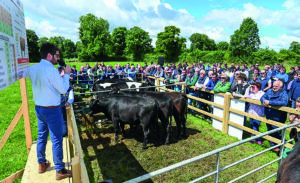
Padraig French, Nicky Byrne, Chloe Millar
In recent years, the use of beef bulls on dairy herds has significantly increased; now, over half of dairy calves are sired by beef breeds. Driven by increased use of sexed semen, this shift presents an opportunity to develop more profitable and environmentally sustainable pasture-based beef systems.
Realising this potential requires improvements in the beef genetics of calves, alongside better early-life nutrition and health and grassland management to support higher animal performance. To help development, the Tipperary Dairy Calf-to-Beef demonstration farm was established, leading to a progressive calf purchase agreement with dairy farms to support the seamless transfer of high-beef potential calves from dairy-to-beef farms. The agreement incentivises participating dairy farmers to use beef artificial insemination sires with higher Commercial Beef Value, promotes greater calf weight-for-age at three to four weeks, and ensures calves are vaccinated against pneumonia before transfer to beef farms.
The farm is a practical platform for applying and assessing research-based technologies in genetics, animal health and nutrition, and grassland management. It measures their impact on animal performance, labour efficiency, and farm profitability in a real-world context.
It also plays an important advisory and educational role. By hosting farm and student open days and discussions, and supporting Teagasc’s DairyBeef500 course, the farm delivers key insights and communication to thousands of farmers and stakeholders, making it a valuable learning and demonstration hub for the industry.
Contact: padraig.french@teagasc.ie
Other contributors: Dawn Meats; Shinagh Estates Limited
Funding: Teagasc core funding; Dawn Meats and Shinagh Estates Limited
Impact Pathway: Technology Development & Adoption
Protected urea: reducing emissions while sustaining production
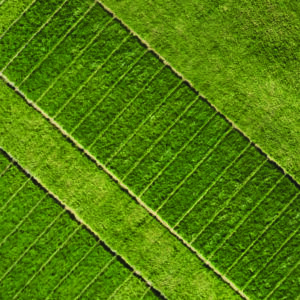
Credit: Teagasc
Mark Plunkett, Patrick Forrestal, John B. Murphy, David Wall, Dermot Forrestal, Francis Quigley, Brian McCarthy, Áine Murray
Using protected urea (PU) in place of calcium ammonium nitrate (CAN) is an important greenhouse gas emission reduction technology for the Irish agriculture sector. PU use has been steadily growing, from about 10% in 2021 to 26% in 2024, but this needs to increase significantly if agriculture is going to meet its climate carbon reduction targets by 2030.
PU use has increased to 26% in 2024, up from 10% in 2021
Challenging weather conditions in 2024 led to questions from farmers and the agricultural sector regarding yield performance of PU. A long-term fertiliser nitrogen (N) field trial at Teagasc Johnstown Castle has been evaluating the use of PU fertilisers using NBPTurea, NBPT+NPPTurea and 2-NPTurea, compared to standard urea and CAN for over 10 years. The results showed similar yields were achieved using the tested protected urea products and for CAN – including in 2024. In addition, since 2019, field trials have been completed, evaluating PU in a grazing situation over a wide range of sites. Results from these trials show the reliable performance of PU with consistent grass production compared to standard N fertilisers. These results were widely communicated to the agricultural industry by Teagasc staff to give reassurance to farmers using PU products, including at the Teagasc Beef and Dairy National Conferences. PU alone has the capacity to reduce total farm carbon equivalent emissions by between 4 and 8% in conventional livestock farming enterprises.
Contact: mark.plunkett@teagasc.ie
Funding: Teagasc core funding; Teagasc Walsh Scholars Programme
Impact Pathway: Technology Development & Adoption
Modelling Irish agricultural GHG emissions

Credit: Climate Change Advisory Council
Trevor Donnellan, Kevin Hanrahan, Gary Lanigan, Karl Richards
Under Ireland’s Climate Law, the Climate Change Advisory Council (CCAC) has statutory responsibility for making carbon budget proposals to the government. In 2024, such a proposal was made covering the period 2031-2040.
Delivering the research and analysis to support these proposals is the Carbon Budgets Working Group (CBWG). Alongside Teagasc research economists, the CBWG includes researchers and academics from universities, the Economic and Social Research Institute, Sustainable Energy Authority of Ireland, the Central Bank of Ireland, and Met Éireann.
Teagasc’s work involved extending the projection horizon of the Food and Agricultural Policy Research Institute (FAPRI)-Ireland model – using this model to provide projections to 2050 on agricultural activity, greenhouse gas (GHG) emissions, and sectoral output, input and income.
With colleagues from the Teagasc Climate Centre, the 2023 Teagasc Marginal Abatement Cost Curve (MACC) analysis was then reassessed over that extended projection horizon. Projections of GHG emissions from agriculture, under six alternative scenarios, were provided to the CCAC and CBWG. Along with projections of GHG emissions and mitigation possibilities in other economic sectors, these projections were used by the CCAC in developing the carbon budget proposal presented to the government in December 2024.
The Teagasc report was published on the CCAC website and formed a key pillar of the analysis provided by the CCAC to the government in support of its carbon budget recommendations. This Teagasc research will inform the sectoral emissions ceiling allocated to the agriculture sector for the period 2031-2040 and future annual climate action plans.
Contact: kevin.hanrahan@teagasc.ie
Funding: Teagasc core funding
Impact Pathway: Policy Influencing
Forecasting grass growth for farmers
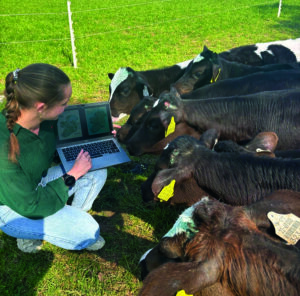
Credit: Teagasc
Elodie Ruelle, Michael O’Donovan, Klervi Le Floch, Richard Bateman, Ciaran Hearn
Weekly grass growth can be highly variable and, with climate change, is becoming increasingly unpredictable. The accurate prediction of the week ahead’s grass growth will significantly improve grassland management on grassland farms. Decision-support tools must evolve to provide more forward-looking information to meet this growing challenge.
The Moorepark St Giles Grass Growth model (MoSt GG) was developed and calibrated using Irish weather and soil data to capture variability in grass growth across different conditions. Since 2019, it has been used to predict grass growth on commercial grassland farms and, since 2020, its forecasts have featured on national television via the RTÉ Farming Forecast. In 2024, a major step forward was taken with its integration into PastureBase Ireland, a national decision-support tool used by thousands of farmers to implement best grassland management practices. This ensures that predictive insights are delivered directly to end users, embedded in the tools they already use and trust.
With MoSt GG now live in PastureBase Ireland, farmers receive daily grass growth forecasts directly on their phones, helping them plan grazing and silage management more effectively. This leads to increased grass use and improved feed budgeting, reducing the need for bought-in feed. Importantly, the model’s integration opens the door to future tools – such as precision fertiliser application or soil trafficability forecasts – which can help reduce nitrogen losses and adapt to extreme weather. As climate variability intensifies, access to forward-looking, data-driven decision support will be increasingly vital for building more resilient and sustainable pasture-based farming systems.
Contact: elodie.ruelle@teagasc.ie
Other contributors: INRAE (French National Institute for Agriculture, Food and Environment); University College Cork
Funding: VistaMilk (Research Ireland); Teagasc Walsh Scholars Programme
Impact Pathway: Technology Development & Adoption
Calculating farm nutrient balance
Jonathan Herron, Natasha Brown, Siobhán Jordan, Laurence Shalloo, Donal O’Brien
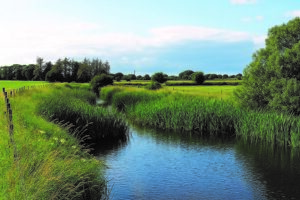
Credit: Teagasc
Last year Teagasc launched the Better Farm for Water Campaign with the objective of supporting farmers to improve water quality. The campaign consisted of ‘8-Actions for Change’, one of which was to improve nutrient balance on farms in relation to nitrogen and phosphorus.
To support farmers to benchmark the status of the on-farm nutrient balance, additional functionality was added to AgNav – the digital sustainability tool developed through a collaborative partnership between Teagasc, Bord Bia, and the Irish Cattle Breeding Federation.
Over 1,000 farms have engaged in nutrient consultations using AgNav
AgNav can be used to measure both farm-specific farm-gate nitrogen balance, along with a detailed breakdown of key sources. The availability of nutrient balance data will strengthen the delivery of farm-specific advisory services focused on improving water quality through better agricultural nutrient management practices.
This approach is already delivering impact, as demonstrated by the Dairygold Grassroots Programme, where over 1,000 farms have engaged in one-to-one nutrient balance consultations using AgNav. Adoption of AgNav is expected to achieve further growth through other water quality and sustainability programmes.
Contact: jonathan.herron@teagasc.ie
Other contributors: Bord Bia; Irish Cattle Breeding Federation
Funding: Department of Agriculture, Food and the Marine
Impact Pathway: Capacity Building
Mapping biodiversity and carbon storage
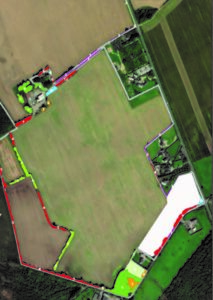
Stuart Green, Tom O’Dwyer, Eleni Kolintziki
Establishing a baseline of the nature value on the Teagasc Signpost Farms is essential to track improvements in biodiversity and above-ground carbon stored in hedgerows and trees.
Over two years, 92 farms were surveyed, under contract, using drone-mounted cameras and Light Detection and Ranging (LiDAR) scanners technology. The cameras provide very high-resolution images from which to map farm habitats, and LiDAR creates a 3-D model of the farm, from which it was possible to estimate biomass and thus carbon captured in trees, hedgerows and woodlands on each farm.
Each farm was mapped with a hybrid manual and machine-learning approach that fused all available datasets together. A geo-enabled PDF was created for each farm, showing the extent of habitats, along with a report on the percentage cover of each habitat on the farm. The generation of carbon stocks reports is continuing and will be completed in 2025.
The baseline maps act as reference material for advisors and farmers to discuss nature and carbon-friendly farming options. The survey data is unique in Ireland; it forms the basis for exploring how best to exploit new sources of information to help inform farms of their options and, importantly, to provide evidence of improvements being made. These will be vital in the development of carbon farming markets and, going forward, will form the basis of mapping functionalities in AgNav, Teagasc’s online climate action platform.
Contact: stuart.green@teagasc.ie
Funding: Teagasc core funding
Impact Pathway: Technology Development & Adoption
Clover increases suckler cattle growth rates
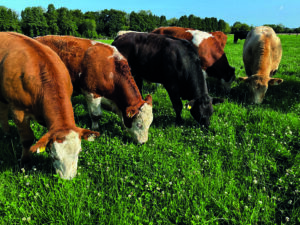
Credit: Teagasc
Peter Doyle, Peter Bennett, Mark McGee, Paul Crosson, Michael O’Donovan, Nicky Byrne
International studies have shown that incorporating white and red clover into perennial ryegrass pastures has the potential to reduce fertiliser nitrogen requirements, increase animal performance and reduce greenhouse gas emissions. However, in Irish suckler beef systems there is a deficit of information on the benefits of incorporating clover into pastures.
Two studies were carried out at Teagasc Grange to fill this knowledge deficit. In the first study, yearling suckler steers and heifers grazing grass-white clover pastures over their ‘second’ grazing season (12 to 19.5 months of age) had a 24kg greater liveweight gain (LWG) of +0.1kg/day than those grazing grass-only pastures. This equated to a 14kg difference in carcass weight per animal.
Cattle on the grass-clover system had a 27kg greater final liveweight than those on a grass-only system.
The second study investigated the impact of a grass-only (150kg N/ha) or grass-clover (75kg N/ha – white clover for grazing and red clover for silage) pasture systems on lifetime cattle performance (from birth to finish).
The suckler progeny had a greater LWG from birth to weaning on the grass-white clover compared to the grass-only pasture, and a greater liveweight gain over the first winter on grass-red clover silage than grass-only silage, with no difference in liveweight gain over the ‘second’ grazing season. This equated to a 27kg greater final liveweight and 18kg greater carcass weight for the cattle on the grass-clover system.
Therefore, suckler beef farmers that incorporate red and white clover into grassland pastures can reduce their requirement for nitrogen fertiliser inputs and increase animal LWG in a suckler calf-to-beef system. This will improve their farm profitability, while also helping to meet sectoral climate targets.
Contact: peter.doyle@teagasc.ie
Other contributors: University College Dublin
Funding: Teagasc Walsh Scholars Programme; Teagasc core funding
Impact Pathway: Technology Development & Adoption
